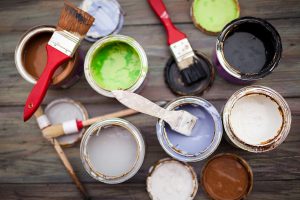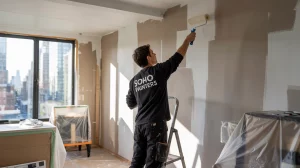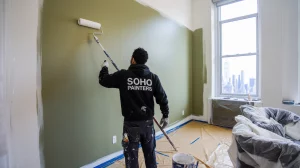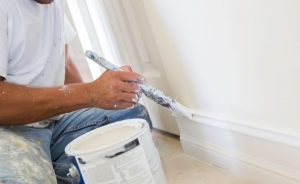When it comes to interior design, matching wall paint colors with wood floors can be somewhat of a challenge. How do you pair light wood floors, which offer warmth and natural beauty? Or medium and dark hardwood floors, which are bolder? Choosing the perfect paint colors that go with the wood floors in your space can elevate the aesthetic and charm that you’re looking for.
You’ll want to start by identifying the undertones of your wood floor – this will help you understand what wall colors are possible. You have to consider wall color principles like contrast, complementary hues, and natural light exposure to determine what color walls go best with the wood floors that you have. By the end of this article, you’ll have the tools to create a cohesive, inviting ambiance that showcases the natural charm of your wood floors.
Identifying Floor Undertones
When selecting wall colors to complement your wood floors, identifying the undertones of the floors is crucial. Undertones refer to the subtle, underlying colors present in the wood. There are three main types of undertones: cool tones, warm/golden tones, and neutral tones.
Cool Undertones
Cool undertones in wood can range from greenish-blue to pinkish hues. Examples of cool-toned wood include Shell Beach, which has a cool, taupe tone. These undertones pair well with warm wall colors like yellow or red.
Warm/Golden Undertones
Warm or golden undertones in wood can vary from reddish-orange to yellowish hues. Avenza, with its luminous golden wheat tone, and Pebble Beach, with subtle warm copper undertones, are examples of warm-toned wood. These undertones complement cool wall colors like blues and greens.
Neutral Undertones
Neutral undertones in wood can mix cool and warm tones, such as beige, taupe, or gray. Woods like Monaco, Canewood, and Provence exhibit these neutral undertones, making them versatile for pairing with both warm and cool wall colors.
To determine the undertone of your hardwood floors, place a white sheet of paper on the floor and compare the colors. The undertones will be more noticeable, appearing reddish, yellowish, or bluish in hue against the white background. Comparing hardwood of the same shade but different undertones is an easy way to spot the undertone of the wood stain.
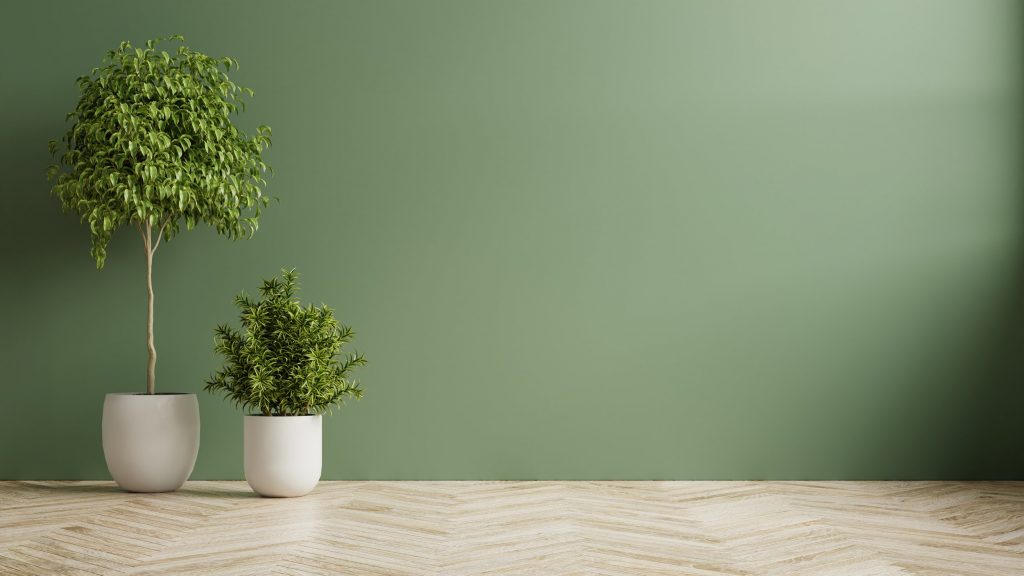
Light Wood Floors
When it comes to light wood floors, such as maple, birch, oak, or bamboo, you have the flexibility to paint your walls almost any color. However, lighter shades tend to create an airy, open feel that complements the natural warmth of the wood. Here are some recommendations for wall colors that pair beautifully with light hardwood floors:
Cooler Whites and Soft Grays
Crisp, cool whites and soft gray tones provide a fresh, airy backdrop that allows the natural beauty of light wood floors to shine. These colors create a serene, calming atmosphere while offering a clean contrast to the warmth of the wood. Opt for shades like Chantilly Lace or Classic Gray by Benjamin Moore.
Neutral Off-Whites and Beiges
Neutral off-whites and beiges offer a warm, inviting ambiance that harmonizes with light wood floors. These shades create a cozy, comfortable feel without overwhelming the space. Consider colors like Swiss Coffee or Revere Pewter by Benjamin Moore for a timeless, versatile look.
Soft Blues and Greens
For a more vibrant yet still soothing palette, soft blues and greens can add a touch of color while complementing light wood floors. Shades like Palladian Blue or Wythe Blue by Benjamin Moore create a tranquil, nature-inspired atmosphere that pairs beautifully with the natural tones of the wood.
When selecting wall colors for light wood floors, it’s essential to avoid warm neutrals with yellow or brown undertones, as these can clash with the warm tones of the wood. Instead, opt for cooler, more muted shades that provide a subtle contrast and allow the natural beauty of the floors to take center stage.
Medium Wood Floors
For medium-toned wood floors like red oak or white oak, the key is to strike a balance between complementing the warm undertones and creating visual interest through contrast. Here are some recommended wall color options:
Earthy Tones
Earthy, muted shades like cinnamon, plum, forest green, and navy can create a cozy, inviting atmosphere that complements the warmth of medium wood floors. These rich, saturated hues add depth and character to a space while harmonizing with the natural tones of the wood.
Cool Contrast
If you prefer a more striking contrast, consider pairing medium wood floors with cool, dark wall colors like aquamarine, dark blue, or dark green. These hues can create a sophisticated, modern look that allows the warmth of the wood to take center stage.
Sophisticated Neutrals
For a timeless, versatile look, opt for rich charcoal or deep gray tones. These neutral shades can create a sophisticated, elegant ambiance while providing a subtle contrast to the warmth of medium wood floors.
When selecting wall colors for medium wood floors, it’s essential to consider the overall lighting in the space. In rooms with ample natural light, you can experiment with bolder, more saturated hues. However, in dimmer spaces, lighter or more muted tones may be more appropriate to prevent the room from feeling too dark or enclosed.
Dark Wood Floors
Dark wood floors exude a rich, luxurious ambiance that can be beautifully complemented with the right wall color choices. When selecting wall colors for dark hardwood floors, it’s essential to strike a balance between creating contrast and maintaining a cohesive, harmonious look.
Lighter Shades for Contrast
One effective approach is to pair dark wood floors with light and neutral shades like off-white, cream, and light blue. These colors create a striking contrast that can make the room feel brighter and more open. Additionally, bold colors like navy blue, emerald green, and black can add depth and drama while allowing the natural beauty of the dark wood to shine.
Sampling and Lighting Considerations
It’s crucial to sample paint colors in the actual space before committing, as lighting conditions can significantly impact how a color appears. For instance, a color that appears light and airy in a well-lit room may seem dull or flat in a dimmer setting. Consider the amount of natural light in the room and how it interacts with the wood tones when selecting wall colors.
Avoiding Dark Wall Colors
While dark wall colors can create a cozy, intimate atmosphere, they should generally be avoided when paired with dark wood floors. This combination can make the room feel small and cramped, diminishing the warm, inviting ambiance you aim to achieve. Instead, opt for light colors like white, cream, or beige to brighten the space and create a sense of openness.
Conclusion
Harmonizing wall colors with wood floors is an art that requires careful consideration of undertones, contrast, and overall ambiance. By identifying the undertones of your wood floors and selecting wall colors that either complement or provide a subtle contrast, you can create a visually appealing and cohesive space. Whether you opt for light and airy shades or rich, bold hues, the key is to strike the right balance and allow the natural beauty of the wood to take center stage.
Ultimately, the colors you choose for your walls should reflect your style and the atmosphere you wish to cultivate in your home. Don’t be afraid to experiment with different color combinations, and remember to sample paint colors in the actual space before making a final decision. With a keen eye for detail and a willingness to play with different tones, you can transform your living space into a harmonious and inviting oasis that showcases the warmth and charm of your wood floors.
Contact Soho Painters to schedule your next paint job today!


